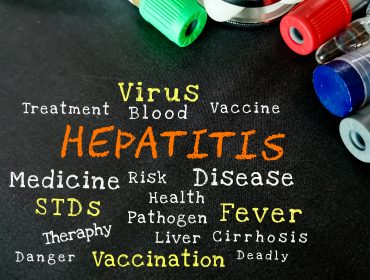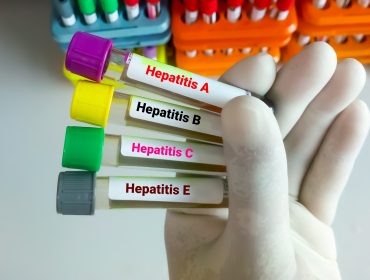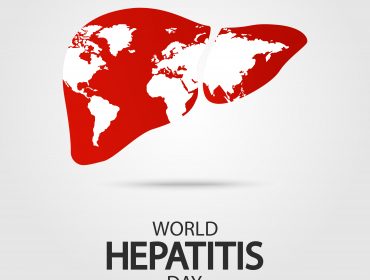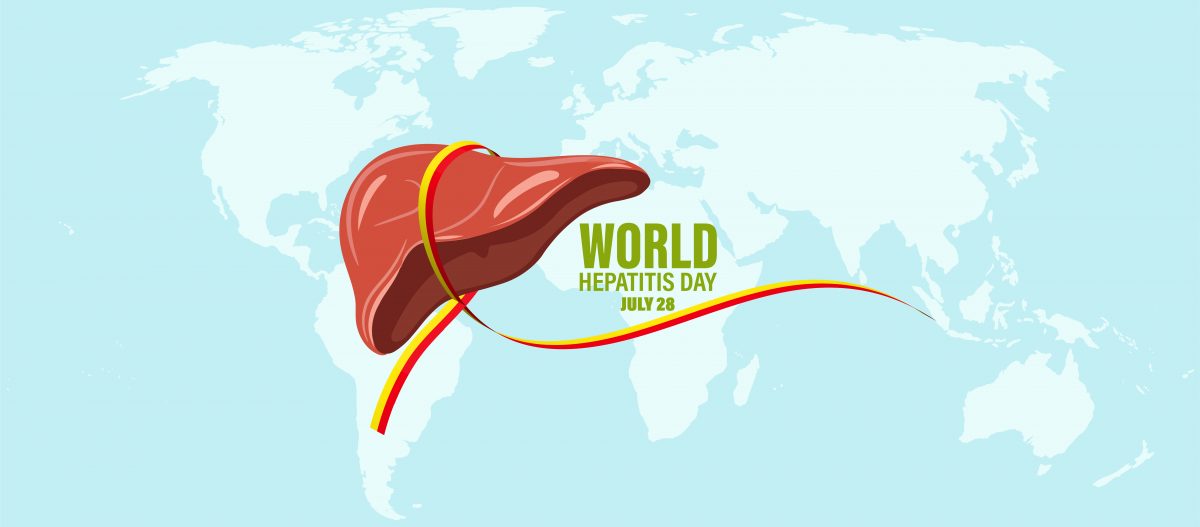World Hepatitis Day
World Hepatitis Day, observed annually on July 28th, is a global event dedicated to raising awareness about hepatitis infections and encouraging prevention, diagnosis, and treatment. It is an opportunity for individuals, communities, and governments to unite and work towards eliminating this potentially life-threatening disease.
Importance of raising awareness about Hepatitis infections
Hepatitis is a significant public health concern, affecting millions of people worldwide. By raising awareness about the different types of hepatitis, their modes of transmission, and available preventive measures, we can help reduce the spread of the disease and improve the quality of life for those affected. Increased awareness also promotes early diagnosis and access to appropriate treatment, which can prevent severe complications and save lives.
Goals of the article
The primary goal of this article is to inform readers about the significance of World Hepatitis Day and provide essential information about hepatitis infections, prevention, and treatment. This will cover topics such as the origin of World Hepatitis Day, the latest research on treatment options, the role of vaccination in preventing hepatitis, and government policies and initiatives for combating hepatitis infections. Through this article, we aim to empower our audience with knowledge and encourage them to take action to support hepatitis prevention and treatment efforts.
Understanding Hepatitis
Definition and types of Hepatitis (A, B, C, D, and E)
Hepatitis is an inflammation of the liver, primarily caused by viral infections. There are five main types of hepatitis viruses: Hepatitis A, B, C, D, and E. Each type has unique characteristics, modes of transmission, and potential outcomes.
- Hepatitis A: An acute infection caused by the Hepatitis A virus (HAV), usually transmitted through contaminated food or water.
- Hepatitis B: A potentially chronic infection caused by the Hepatitis B virus, which can be transmitted through contact with infected blood & bodily fluids or from mother to child during childbirth.
- Hepatitis C: A commonly chronic infection caused by the Hepatitis C virus (HCV), transmitted via contact with infected blood, sharing needles, or other forms of exposure to contaminated blood.
- Hepatitis D: A severe form of hepatitis that only occurs in individuals already infected with Hepatitis B, caused by the Hepatitis D virus (HDV), and transmitted through contact with infected blood.
- Hepatitis E: An acute infection caused by the Hepatitis E virus (HEV), usually transmitted through contaminated food or water, similar to Hepatitis A.
Modes of transmission

The modes of transmission for hepatitis viruses vary depending on the type:
- Hepatitis A and E: Transmitted primarily through the fecal-oral route, either by consuming contaminated food or water or through contact w/an infected person.
- Hepatitis B, C, and D: Transmitted through contact with infected blood or bodily fluids, including sexual, sharing needles, or mother to child during childbirth.
Symptoms and complications
Symptoms of hepatitis may include fatigue, fever, loss of appetite, nausea, puking, stomach pain, dark urine, clay-colored stools, joint pain, and jaundice (yellowing of the skin and eyes). In some cases, hepatitis infections can be asymptomatic, particularly in chronic forms.
Complications of hepatitis may include liver cirrhosis (scarring), liver failure, and liver cancer. The risk of complications varies depending on the type of hepatitis and the individual’s overall health.
Global Prevalence and Impact
Hepatitis affects millions worldwide, with Hepatitis B and C being the most common and posing the greatest threat to public health. According to the World Health Organization (WHO), close to 325 million people are living with chronic Hepatitis B or C infection, and nearly 1.4 million people die from viral hepatitis-related complications each year. The global burden of hepatitis highlights the importance of raising awareness, implementing preventive measures, and providing access to appropriate treatment options.
Origin of World Hepatitis Day
Background and history
World Hepatitis Day was first launched in 2008 by the World Hepatitis Alliance, a non-governmental organization representing patients with viral hepatitis. The date, July 28th, was chosen to honor the birthday of Dr. Baruch Blumberg, who discovered the Hepatitis B virus and developed its vaccine. In 2010, the World Health Assembly, the decision-making body of the World Health Organization (WHO), officially recognized World Hepatitis Day, making it one of only a few internationally recognized health awareness days.
The role of the World Health Organization (WHO)
The WHO plays a crucial role in the global fight against hepatitis by setting standards for prevention, control, and treatment and providing guidance to countries on effective strategies for managing the disease. On World Hepatitis Day, the WHO collaborates with governments, non-governmental organizations, and civil society to organize events and campaigns that raise awareness about hepatitis, promote prevention measures, and encourage testing and treatment. The WHO also supports research and innovation, working to eliminate hepatitis as a health threat to the community by 2030.
Annual themes and objectives
Each year, World Hepatitis Day focuses on a specific theme highlighting a particular aspect of the fight against hepatitis. These themes help guide the global conversation and direct attention toward key issues and challenges. Examples of past themes include “Eliminate Hepatitis” (2017), “Test. Treat. Hepatitis” (2018), and “Hepatitis-free future” (2020). The objectives of these themes range from increasing testing and diagnosis rates, encouraging access to treatment, and emphasizing the importance of prevention measures such as vaccination and safe injection practices. The annual themes serve as a call to action for governments, healthcare professionals, and individuals to work together in the fight against hepatitis.
Latest Research on Treatment Options

Current treatments for different types of hepatitis
- Hepatitis A: Treatment for Hepatitis A is primarily supportive, as the infection usually resolves independently. Patients are advised to rest, maintain hydration, and avoid alcohol and certain medications that may strain the liver.
- Hepatitis B: Treatment for chronic Hepatitis B includes antiviral medications such as tenofovir or entecavir, which help suppress the virus and prevent liver damage. In some cases, interferon injections may boost the immune system’s response against the virus.
- Hepatitis C: The treatment of choice for Hepatitis C is a combination of direct-acting antiviral medications (DAAs), such as sofosbuvir, ledipasvir, and velpatasvir. These medications have revolutionized Hepatitis C treatment with high cure rates and minimal side effects.
- Hepatitis D: Treatment options for Hepatitis D are limited, but pegylated interferon-alpha is currently the most common therapy, although it has limited efficacy.
- Hepatitis E: Similar to Hepatitis A, treatment for Hepatitis E is mainly supportive, with no specific antiviral medications available.
Advances in antiviral medications
Significant progress has been made in developing new antiviral medications, particularly for Hepatitis B and C. The introduction of direct-acting antiviral drugs (DAAs) has dramatically improved the treatment outcomes for Hepatitis C, offering cure rates of over 95% with shorter treatment durations and fewer side effects than previous therapies.
For Hepatitis B, ongoing research aims to develop new antiviral medications that can effectively target the virus’s replication process and potentially achieve a functional cure, meaning the virus remains inactive even after stopping treatment.
Potential new therapies and ongoing clinical trials
Researchers worldwide continue to explore new therapies for hepatitis, targeting various aspects of the viral life cycle and host immune response. Some potential new treatments include:
- RNA interference (RNAi) therapies: These therapies aim to block the production of viral proteins by targeting the virus’s genetic material. Several RNAi-based treatments are in clinical trials for Hepatitis B.
- Therapeutic vaccines: Unlike preventive vaccines, therapeutic vaccines stimulate the immune system of individuals infected with hepatitis viruses, helping them control or eliminate the infection. Research is ongoing for both Hepatitis B and C.
- Immune checkpoint inhibitors: These drugs have shown promise in treating certain cancers, and researchers are exploring their potential in treating chronic viral infections like Hepatitis B and C by enhancing the immune system’s ability to fight the viruses.
Ongoing clinical trials and research hold the promise of more effective and accessible treatment options for all types of hepatitis, bringing us closer to a world free from this devastating disease.
Role of Vaccination in Hepatitis Prevention
Overview of available vaccines
Vaccines have a vital role in the prevention of hepatitis infections. Currently, there are effective vaccines available for Hepatitis A and B:
- Hepatitis A vaccine: This inactivated vaccine is given in two doses, typically six months apart. It provides long-lasting immunity against the Hepatitis A virus.
- Hepatitis B vaccine: The Hepatitis B vaccine consists of three doses, usually administered over six months. It offers long-term protection against the Hepatitis B virus. Additionally, a combination vaccine for Hepatitis A and B is available for individuals who require protection against both infections.
Unfortunately, there are no vaccines available for Hepatitis C, D, or E at this time.
Recommendations for vaccination by age and risk groups
Vaccination recommendations vary by country but generally include the following guidelines:
- Hepatitis A vaccine is recommended for all children aged 12 months and older, travelers to areas with high rates of Hepatitis A, individuals with chronic liver disease, and those at increased occupational risk (e.g., healthcare workers, sanitation workers). Hepatitis A testing.
- Hepatitis B vaccine: The vaccine is usually administered to newborns as part of routine immunization programs. It is also recommended for unvaccinated children and adolescents, healthcare workers, people with chronic liver disease, individuals with multiple sexual partners, injection drug users, and travelers to areas with high rates of Hepatitis B. Hepatitis B testing.
Effectiveness and safety of vaccines

Both the Hepatitis A and B vaccines have proven to be very effective in deterring infection. The Hepatitis A vaccine is estimated to be 94% to 100% effective, while the Hepatitis B vaccine has an efficacy rate of over 90% among fully vaccinated individuals.
The vaccines are also considered safe, with side effects being generally mild and short-lived. Common side effects include soreness near the injection site, mild fever, and fatigue. Side effects are rare, and the benefits of vaccination far outweigh the potential risks for most individuals.
By prioritizing vaccination for those at risk and incorporating it into routine immunization programs, we can significantly reduce the spread of Hepatitis A and B and move closer to a hepatitis-free future.
Government Policies and Initiatives for Combating Hepatitis Infections
Hepatitis is a serious global health concern, and governments worldwide are taking steps to reduce the spread of infection and improve access to treatment. National and international strategies have been developed to eliminate hepatitis infections, including the World Health Organization’s Global Health Sector Strategy on Viral Hepatitis 2016-2021. This strategy focuses on prevention, diagnosis, treatment, care, and support for those affected by viral hepatitis.
Governments are also providing funding and resources for hepatitis research and treatment. For example, in the United States, the CDC has established a Viral Hepatitis Action Plan that outlines goals for reducing new infections, improving access to care, and eliminating disparities in health outcomes. The plan includes initiatives such as increasing public awareness about viral hepatitis through educational campaigns; expanding access to testing; providing support services for those living with chronic hepatitis; and investing in research into new treatments.
In addition to these national strategies, many countries are launching public health campaigns to raise awareness about hepatitis prevention and treatment. These campaigns often involve television ads or billboards featuring messages about safe practices such as vaccination or avoiding contact with infected blood or body fluids. Educational programs are also being developed to teach people how to recognize symptoms of infection and seek medical attention if necessary.
By implementing these policies and initiatives at both a national and international level, governments are working towards reducing the burden of hepatitis infections worldwide.
Doctors and Patients Affected by Hepatitis
Interviews with patients affected by hepatitis reveal a wide range of experiences, from the initial shock of diagnosis to the journey through treatment and recovery. Some patients may have experienced asymptomatic infections, only discovering their condition through routine blood tests, while others endured severe symptoms that led them to seek medical help. Similarly, doctors share their perspectives on the evolving landscape of hepatitis treatment, discussing the impact of new medications and the importance of early diagnosis and intervention.
Challenges Faced by Patients and Healthcare Providers
Both patients and healthcare providers face various challenges in managing hepatitis infections:
- For patients, these challenges may include coping with the physical and emotional toll of the disease, navigating complex treatment regimens, and dealing with the stigma associated with hepatitis infections.
- Healthcare providers face challenges such as ensuring patients receive accurate diagnoses, providing practical and up-to-date treatments, and addressing barriers to care, such as limited access to healthcare services or prohibitive costs.
Stories of Hope and Recovery
Despite the obstacles faced by those affected by hepatitis, many inspiring stories of hope and recovery emerge. Patients who have successfully completed treatment share their experiences of regaining their health and returning to their everyday lives, emphasizing the importance of perseverance and support from loved ones. Doctors recount instances where timely interventions and advances in treatment options have transformed patients’ lives, resulting in improved health outcomes and reduced risk of complications.
These stories are powerful reminders of the resilience of the human spirit and the progress made in the fight against hepatitis. They underscore the importance of continued efforts to raise awareness, expand access to prevention and treatment, and ultimately work towards a hepatitis-free future.

Recap of the importance of World Hepatitis Day
World Hepatitis Day, celebrated annually on July 28th, is crucial in raising awareness about hepatitis infections and promoting prevention, diagnosis, and treatment. As a global event, it unites individuals, communities, and governments with the common goal of eliminating this potentially life-threatening disease. By increasing awareness of hepatitis and its associated risks, we can encourage early diagnosis, improve access to appropriate care, and ultimately save lives.
As we reflect on the significance of World Hepatitis Day, we must recognize that we can contribute to the fight against hepatitis. We encourage our readers to take action by:
- Educating themselves and others about the different types of hepatitis, their modes of transmission, and available preventive measures.
- Supporting vaccination efforts by getting vaccinated against Hepatitis A and B, if applicable, and encouraging friends and family members to do the same.
- Promoting safe practices such as proper hand hygiene, secure food handling, and responsible sexual behavior to reduce the risk of hepatitis transmission.
- Advocating for increased access to hepatitis testing, treatment, and support services, particularly for vulnerable populations.
- Participating in local events or online campaigns dedicated to raising awareness about hepatitis and supporting those affected by the disease.
Together, we can make a difference in the global fight against hepatitis and work towards a healthier, hepatitis-free future.
We are an excellent resource for those looking to get tested for hepatitis A, B, and C. Our website offers private testing at over 4,500 nationwide test centers, making it easy and convenient. In addition, STDcheck.com is one of the few places where you can access the HIV RNA Early Detection test, which is an accurate test that can identify infections in their early stages. With fast results and affordable prices, STDcheck.com provides a judgment-free and hassle-free experience for those looking to get tested for hepatitis A, B, and C.
Testing for hepatitis A, B, and C is necessary because these viruses can cause serious health problems if left untreated. Hepatitis A can lead to liver damage or failure if not treated quickly enough; hepatitis B can cause cirrhosis or liver cancer; hepatitis C can cause cirrhosis or liver cancer if left untreated. By getting tested with STDcheck.com, you can detect any of these viruses early on so that you can take the necessary steps to treat them before they become more severe health issues.
Overall, STDcheck’s private testing services make it easy to get tested for hepatitis A, B, and C without having to go through a doctor’s visit or an insurance company. With fast results and convenient locations nationwide, we provide an accessible way to detect any of these viruses early on so that you can take the necessary steps toward treatment before they become more severe health issues.
Medically Reviewed by Gill Sellick, MBChB on June 18, 2023
Secure and Confidential
STD testing services
The fastest results possbile - available in 1 to 2 days

Tagged
Categorized As
Author: STD Check Editorial Team
At STDCheck.com, we go to great lengths to ensure quality content. We’re using our own collection of data. It is not bought or made up for “click-bait” purposes. We don’t entice traffic with cheesy graphics or raunchy headlines. Our information is to promote STD testing, educate people, let go of social stigmas, and bring awareness. We also provide a completely confidential atmosphere through private testing. When we produce an article, it is fact-based. We check it with medical advisors that approve it. Our staff consists of doctors and other medical professionals who peer review the content we make available on STDCheck.com. From all over the world, we have sourced the best and the brightest content developers, including medical professionals, marketing engineers, data scientists, content specialists, and media relations.




